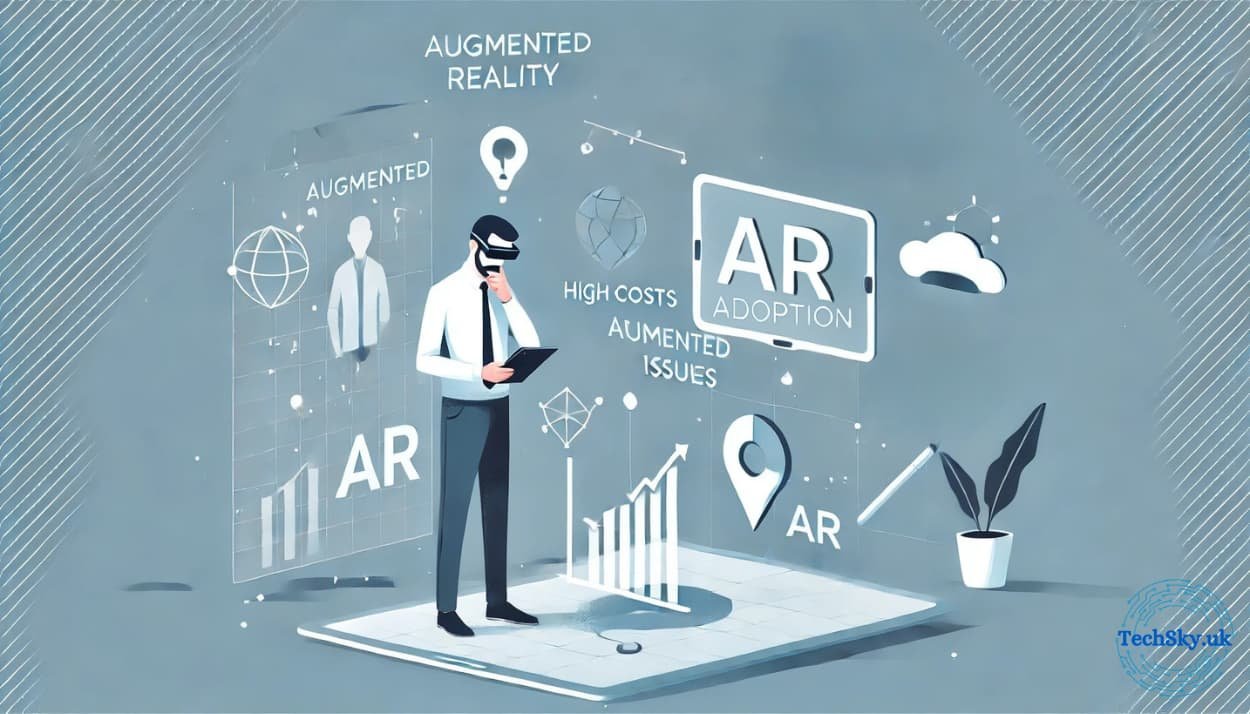While augmented reality (AR) offers incredible potential for businesses, adopting this technology often comes with its own set of challenges. From high development costs to user skepticism, overcoming these barriers is crucial for successful implementation. In this article, we’ll explore the common obstacles to AR adoption and provide strategies to address them effectively.
Why AR Adoption is Worth the Effort
Despite its challenges, AR adoption can yield significant benefits. Here’s why businesses are investing in this technology:
- Enhanced Engagement: AR creates immersive experiences that capture attention and drive interaction.
- Improved Customer Experience: AR simplifies complex information, making it easier for users to understand products or services.
- Competitive Edge: Early adopters of AR can differentiate themselves in crowded markets.
These benefits make the effort to overcome AR adoption challenges worthwhile.
Steps to Overcome AR Adoption Challenges
Here are actionable steps businesses can take to address the barriers to AR adoption:
- Start Small: Begin with simple AR projects to minimize costs and learn the basics.
- Educate Stakeholders: Provide clear examples of AR’s value to secure buy-in from decision-makers.
- Choose Scalable Solutions: Invest in AR platforms that can grow with your business needs.
- Focus on User Experience: Design AR applications that are intuitive and add real value for users.
Implementing these steps can help businesses successfully navigate AR adoption.
Key Challenges and How to Solve Them
AR adoption presents specific challenges, but they can be addressed with the right strategies:
- High Costs: Partner with AR providers who offer flexible pricing models and focus on ROI-driven solutions.
- Technical Complexity: Collaborate with experienced developers to ensure seamless integration with existing systems.
- User Resistance: Educate users about AR’s benefits through tutorials and live demos.
By tackling these challenges head-on, businesses can pave the way for successful AR adoption.
The Future of AR Adoption
The adoption of AR is expected to grow as technology becomes more accessible. Here are some future trends:
- Improved affordability of AR hardware and software solutions.
- Broader integration of AR with AI for more personalized user experiences.
- Greater adoption of web-based AR, reducing the need for app downloads.
These trends indicate a promising future for AR technology across industries.
Exclusive Insights: Success Stories in AR Adoption
Here are some inspiring examples of businesses that overcame AR adoption challenges:
- Pepsi: Used AR in bus shelters to create immersive ad campaigns, attracting significant attention.
- L’Oréal: Successfully integrated AR into their e-commerce platforms for virtual makeup try-ons.
- IKEA: Leveraged AR to help customers visualize furniture in their homes, reducing product returns.
These success stories highlight the possibilities that come with overcoming AR adoption challenges.
Did You Know?
Here are some fascinating facts about AR adoption:
- The global AR market is expected to reach over $100 billion by 2030.
- Businesses that use AR report an average 30% increase in customer engagement.
These facts emphasize the growing importance of AR technology.
Key Takeaways
Overcoming AR adoption challenges is critical for unlocking its full potential. By starting small, educating stakeholders, and addressing technical hurdles, businesses can successfully integrate AR into their operations and stay ahead of the competition. Now is the time to embrace AR and reap its rewards.
Frequently Asked Questions
Here are answers to common questions about AR adoption:
- Q: How can small businesses afford AR technology?
A: Many AR providers offer affordable and scalable solutions tailored to small businesses. - Q: What industries benefit most from AR?
A: Retail, healthcare, education, and entertainment are among the top industries leveraging AR effectively.
